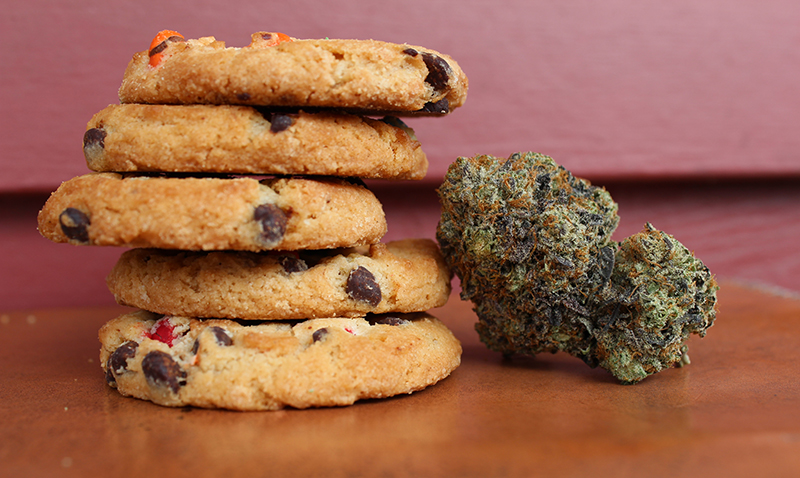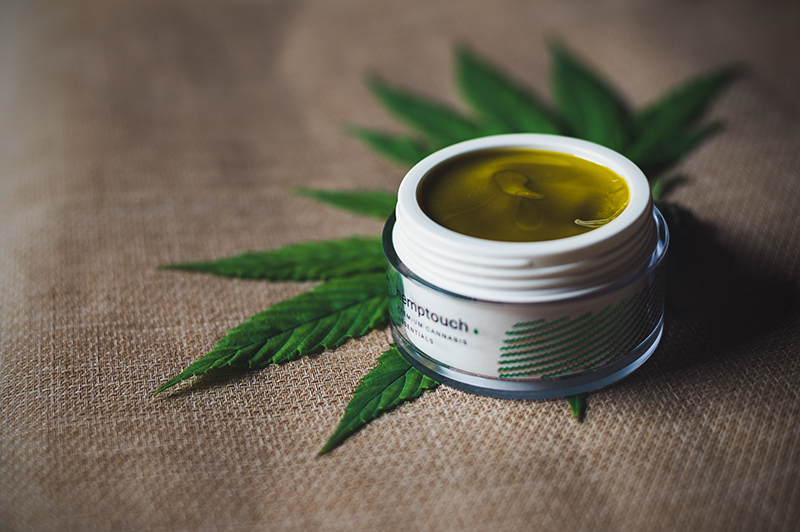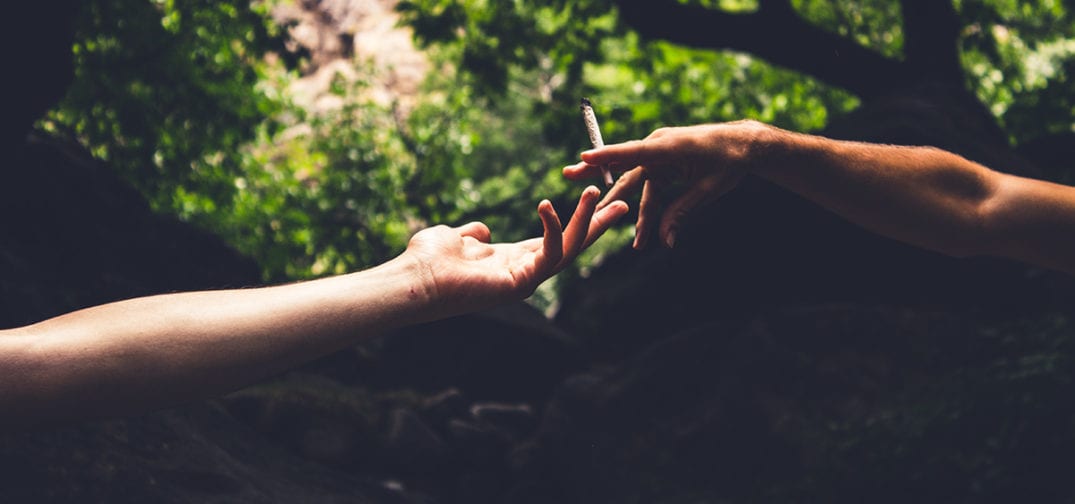Cannabis policy in the United States is developing quickly; eleven U.S. states have now have established legal, adult-use cannabis markets. So, whether you are an avid user of cannabis, know people who are, or are simply curious about what all the hype is about, it’s important to know how cannabis affects your brain and body — at the very least, so you don’t end up uncomfortably stoned on the floor of some friend-of-a-friend’s apartment (don’t worry, we’ve all been there).
Knowing a little about the compounds in cannabis can help you choose the right strain with the right cannabinoids for you.
The Nitty Gritty
∆9-Tetrahydrocannabinol, or THC, is the chemical produced by cannabis that’s responsible for the feeling of being “high.” THC activates receptors in our body called cannabinoid (CB) receptors. These receptors are part of a system called the endocannabinoid system (ECS). The ECS is widespread throughout the brain and body.
Studies show that CB1 receptors present in the forebrain can affect executive functioning and decision making when activated, and those in the hippocampus play an important role in memory. CB receptors are also widespread throughout the body, present in places like the lungs, gastrointestinal tract, and the immune system. Not surprisingly then, the endocannabinoid system is responsible for a multitude of bodily processes like appetite, pain modulation, memory, mood, and a vast array of others.
There are two known chemicals naturally produced by our body that activate receptors in the ECS — 2-arachidinoyol-glycerol (or 2-AG) and anandamide. These chemicals contribute to the ECS’ role of homeostatic regulation — which is basically your body’s way of checking in with itself and making sure things don’t get too out of whack. When you smoke cannabis (or eat it, swallow it, vape it, rub it, or consume it by any other method), THC enters the brain and binds to these receptors. Because THC is now present, this makes it harder for the cannabinoids that our body naturally produces to do what they do best, and this can throw off homeostatic regulation. This is why you might get “the munchies” or find that your memory is not the best after you smoke — because THC is taking the place of the chemicals that normally regulate appetite and memory.
Benefits of Cannabis Consumption
Despite symptoms like increased appetite, fatigue, and paranoia, THC has been known to help people with various conditions, one being insomnia — studies have shown THC can partially restore the regulation of sleep. It also helps those who struggle with eating disorders by restoring appetite. And THC is just one of over 100 cannabinoids in cannabis.
Cannabidiol, or CBD, is another immensely popular cannabinoid — it is nonintoxicating, however, meaning it doesn’t make you feel high. Studies show that CBD can help people suffering from epileptic symptoms see major reductions in seizures. CBD can also help cancer patients endure chemotherapy and can weakly activate some CB receptors that regulate inflammation, but it also works through other mechanisms like the serotonin system. This floods the body with messages, which will have different effects depending on where certain receptors are located. If CB receptors in the lymph nodes are being activated as part of the immune response, the message could be telling the body to lower inflammatory responses, thus decreasing pain for inflammatory conditions (which is why CBD helps with pain modulation).
So You Want to Try Cannabis?
If you’re new to the hype, it may feel overwhelming to figure out where to begin. There are many different ways you can consume cannabis which will vary your high both in intensity and duration.
Smoking/Inhaling
Smoking cannabis is the fastest way to feel its effects because the compounds go straight into your bloodstream via lung capillaries. This means you may start to feel high within minutes; the sensation typically lasts 1-2 hours. When you smoke, the chemicals in the cannabis are carboxylated and transformed into their active forms. Most flower has THC contents between 5-25% and if you’re just starting out, it may be good to start low due to having a low tolerance. Smoking also gives you more control of your dose because you can load the bowl with as much or as little flower as you’d like.

Vaporizing, on the other hand, simply heats up the compounds without burning them. Many people argue that vaping is healthier for your body and can lead to a more efficient high, however this is still being studied. Another factor to consider with vaping is that most vapes use concentrated oil which can have up to 80% THC present. Because of this you will experience a substantially more intense high.
If you still want to go the vape route for its potentially better treatment of your lungs, there are dry flower vapes available in which you fill the vaporizer directly with flower just like you are loading a bowl.
Edibles
Edibles have become a popular way to consume cannabis with their bright and bold packaging and yummy infusions into foods like candies, cookies, and even beef jerky. The most important note to consider when taking the edible route is its bioavailability. When cannabis enters your digestive system, it activates more slowly because it must be processed by enzymes in your digestive tract. Many unwilling victims are all-too-familiar with the experience of taking an edible and not feeling anything 45 minutes later, so they take more. Little did they know that on its way to the liver, the body converts THC into a much more potent metabolite called 11-hydroxy-THC. Then, all at once, the intoxication spikes and they are way, way too high.
That’s why, if you are a first-time consumer, it’s recommended that you start with a low dose of 1-5 mg THC and exercise patience. It is also a good idea to have food in your stomach and to be properly hydrated.

Tinctures
Using cannabis in the form of a tincture follows the sublingual route of administration. Tinctures are usually alcoholic extracts containing cannabis and may be an appealing method if you want to avoid smoking. Often, a user will take a drop of the tincture under their tongue and the extract will enter the body via blood vessels there. This onset is quicker than an oral route because the compound does not have to enter the digestive system (unless you choose to add the tincture to your food or beverage).
Users may feel effects after about 15 minutes and effects should last about 90. Like inhalation, this route of administration gives you some dosing freedom because you can control how much you want to take.
Topicals
The last common way to consume cannabis is with topical lotions and salves. This method is useful for localized or chronic pain because the cannabis-infused rub can be applied in a specific region and can permeate the skin there to benefit that specific area. Many people use topicals for arthritis, inflammation, or general muscle soreness. Even if the lotion or salve contains THC, you will not feel high from this route of administration because the cannabinoids do not typically penetrate deep enough into the bloodstream to cause intoxicating effects.

What about CBD?
Because of the expanding market, most if not all of these consumption methods can involve a variety of CBD:THC ratios. There are tinctures derived from hemp, meaning they are CBD dominant and legally cannot contain more than 0.3% THC. You can get flower, tinctures, and salves that have 1:1 or 2:1 THC:CBD ratios. You can even find flower that is CBD-rich with only trace amounts of THC if you don’t like the feeling of being high but still want the therapeutic benefits of cannabis. The cannabis world is your oyster — especially if you live in one of the 11 states that have legalized for adult use.
The Bottom Line
Scientists have learned a lot about cannabis and its effects since THC was first discovered in 1964, and even more research coming out about the other main cannabinoids present in cannabis. However, because each brain works a little differently, the specific cannabis sample that may help you with anxiety problems could have a different effect on someone else.
If you’re new to cannabis consumption, think about the method you want to begin with and start with a low dose. Be patient with the process and keep in mind that not all endocannabinoid systems are made the same.
Get daily cannabis industry news and insights. Subscribe
End
